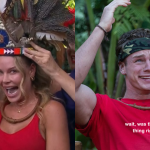
There have been many articles over the years documenting the worst of NBA fashion, from oddly hood-referencing 2009 NBA.com pieces, to the predictable Buzzfeed listicle. And this is because, for the most, NBA fashion is peculiarly atrocious – a perennial testament to the excesses of eras. At least until recently.
Typically, NBA fashions have mimicked the tastes of the era. As the media coverage grew, we began to see more NBA – and hence more NBA fashion. By the 90s, the bespoke abominations of some of the NBA’s biggest superstars were being recorded in all their tasteless glory.
But something happened last year that affirmed NBA fashion was no longer just an amusing narrative of eccentricity and quiet lunacy.
Roy Hibbert, the 7ft 2in, 290lb centre for the Indiana Pacers, was actively talked out of wearing a monocle to a post game interview. A monocle. Had he worn it, it could have been passed off as mere eccentricity. But a teammate talked him out of it, and he thought “yeah, maybe the monocle is a bit much.” Between the two of them THEY CARED SO MUCH ABOUT FASHION. What Hibbert’s monocle represented was full-blown affectation gone mainstream.
The 2013-2014 season has recently begun, and this year’s NBA fashion should be sensational. To understand the full context of what we’re witnessing, here’s a potted history of NBA fashion.
1960s
There’s really not a lot to go on here in the early days; it’s not an easy google. But how’s the satin night jackets and super high cut duds on Jerry West and Oscar Robertson for the 1960 USA Men’s Basketball team?

Image via Double Dribble
And here’s a dunk reel of 1960s jams. It’s both impressive and mystifying how they dunked in shorts like that.
1970s
This era saw off-court fashions crossover into the on court look of the NBA, and was dominated by three bigger-than-life forces: the 7ft Artis Gilmore; the man synonymous with the dunk, Julius Irving; and the introduction of cocaine not just to NBA players, but to their fashion decisions, and player-turned-coach Larry Brown. This decade of NBA fashion also pre-dated the founding of PETA (1980) so fur was worn regularly with the kind of guiltless finesse now only seen on Fendi campaign ads and Mary Kate Olsen. Meanwhile, the pimp archetype of cinema had been popularised in Blaxploitation movies like Shaft and Avenging Disco Godfather which might have contributed to some of the louder sartorial choices.
Artis was a total badass and wore fur numbers like this:

Image via
Julius pioneered dunking in actual games, and when he cared about his look, he cared.

Image via
He Really Cared.

Image via
Cocaine we can probably thank for Bill Walton‘s earthy bandana (below left), Wilt Chamberlain‘s phenomenal junk (centre), and Walt Frazier‘s everything (guy in fur hat lounging on Rolls).

1980s
The coke thing really got out of hand around now. It’s widely accepted that the quality of play was damaged as a result. Fortunately, the quality of fashion decisions was not. We went from a breezy, laid back Magic Johnson in his creased denim, to Kareem Abdul-Jabbar in his full 7ft Nation of Islam glory…

In the ’80s we had Larry Bird in his unrelenting, cigar-smoking back country mop, and Chuck Person‘s bold pink cummerbund…

We also had the surprisingly respectable, in The Round Mound of Rebound Charles Barkley‘s maroon collegiateness, and Hakeem Olajuwon‘s natty black tie number.

But what the ’80s most famously birthed was Michael Jeffrey Jordan. He looked like such a respectable young chap, and his eponymous sneaker would become iconic; yet Michael was a ticking time bomb. Who was to know he was hell bent on concocting the most inexplicably ill-fitting outfits known to man?

Photo by Jeff Haynes, AFP via Getty Images
1990s
The Nineties marked a cultural shift in music, style and faddery, all of which was really just a bastardised amalgam of what had come before. With one possible exception: hip hop. Welcome to the party, hip hop! There’s no way the almost exclusively white administration of the NBA will have any problem with your influence on the game. Let’s see what you’ve got!
Firstly, there was the blinding Colour Me Badd/Arrested Development Era featuring Michael Jordan. Like the music, the clothes referenced reggae, Black Nationalism and big brands (which had finally recognised the effectiveness of recruiting major sports stars to shill their wares). The resulting aesthetic combined loud colours, African-inspired prints, and visible logos. The poster child for this era of style is The Fresh Prince Of Bel-Air – enough said.

Image via
And Chris Webber

Image via
We’re loving the flair thus far. What could possibly come next in this new-found era of colourful ’90s masculinity? The answer is extra size. More specifically: Really Big Suits.
The Wall Street boom and cocaine-related inflation of confidence were responsible for the explosion of the Power Suit. This was a time when clothes were a representation of social currency, and the total yards of fabric worn was correlated with your baller status. That’s the only explanation we can come up with to excuse the insane sartorial behaviour that was to to make an indelible impression for aeons to come.
Maurice Taylor, wow.

Image via
Tim Thomas, you are wearing curtains my guy.

Image via
Chauncey Billups, no.

Image via
Here’s Jalen Rose, in a possible homage to his last name. I’m actually kinda in on this.

Image via
But we have to get back to Jordan now. You knew we weren’t just ripping past that guy after a quick burn, because this man’s enduringly terrible sense of style deserves so much more than a mere mention.
By the mid-to-late 1990s he had accrued unfeasible wealth and high celebrity and had entrenched his penchant for objectively terrible couture. No one could argue: he had more money and influence than God – and that would lead to a life of staggering misfires.

Images via here, here and here.
Can you imagine the kilometres of fabric going into these tents? And the cost involved in getting such suits tailored to his athletically superior but sartorially challenged physical proportions? Basically, Jordan was paying mad money to walk around looking like a giant toddler. [Note: To get lost in his lengthy history of ill-fitting suits and terrible dress choices in general, you’d benefit from perusing online compendium What The Fuck Is Michael Jordan Wearing?]
The suits were more than just really problematic; they were a real problem.
In the 30 For 30 documentary ‘Broke’, Antoine Walker gives the brutal details of how he managed to squander over $100M in career earnings. In the doco Walker literally blames the amount of custom suits he bought for himself, his friends and his family as one of these reasons he went broke.
2000s
One millennium dovetailed with another and, after surviving Y2K, we’ve reached the Naughts. But before we go any further, we need to address the big grey elephant in the room that looms over this decade like an enormous shadow of what-the-fuck-even-are-those-seams-and-fake-pockets, and that is Drew Gooden‘s draft suit. Drew Gooden’s draft suit is literally the worst suit ever in the history of anywhere in the universe. It’s the Voldemort of tailoring.

Image via
The above image had to be shared because it is one of the lingering reminders of that horror decade where style was measured by the square metre; and that insane excuse for an outfit is the ultimate barometer for illustrating how the NBA turned things around – fashionably speaking – in the late 2000s. That was when things suddenly got great.
But first…
David Stern, the NBA’s commissioner since 1682, finally freaked out about the hip hop influence. He didn’t like Allen Iverson knocking about like Ludacris in a Snuggie. The hip hop look and its associated ‘thug’ image was officially buried following an historical incident known as The Malice in the Palace, in which the player formally known as Ron Artest totally jaws the ancestor of Turtle from Entourage (watch the footage below; seriously, the guy looks like Turtle’s long lost twin from where I’m sitting). The Artest-Turtle knock out and various other player vs fan beatdowns were the final straw that broke the camel’s fondness for diamond coated pendants and “thugging out”. Stern figured the rap fashion was to blame for the unruly behaviour and forced players to wear ‘smarter’ (read: whiter) clothes, which led to a transition about as awkward as male puberty: the ’00s incarnations of the Big Suits.
Before he became the spiritual head of the current New York Knicks Fashion Week clique, Amar’e Stoudamire‘s rookie disaster made him look like vertically stacked children sneaking into a movie.

Image via
More of the 2000’s Big Suit reprisal, from left to right: Lebron, ech;
Emeka Okafor kiiiinda tried;
Carmelo, more is not merrier with buttons on suits my friend.

Images via here, here and here
It looked as though history was about to repeat itself… but come the late ’00s everything suddenly flipped. #Menswear hit the NBA and basically every guy in the league did a total style reset.
2010s
This is the ‘now’ look. This is the NBA fashion climate in which Roy Hibbert thinks a monocle is an acceptable move. That’s the situation going on.
For the most part there’s been two dominant parties in the twenty-teens: Oklahoma City’s starting point guard Russell Westbrook (below left) and the Couture Bros in Miami (below right).
First up is Westbrook, who is not afraid of bold prints, experimental silhouettes, and brightly coloured hipster shit.
This drop-crotch capri pant and tunic combo is very Westbrook:

Image via
This might be even more Westbrook:

Image via
… and this is one of my favourite Westbrookings:

Image via
Meanwhile in Miami, Lebron James and Dwyane Wade do a contemporary take on coke suits, high-end street attire, and leisurewear pulled direct from the runway.
Look at these fashion buddies. Can you imagine how excited they were to finally get to arrive places together?

Image via
Following just behind these two forces are New York’s very own Knicks. Recently injured Tyson Chandler (who’ll be out for four to six weeks after suffering a non-displaced fracture of his right fibula; a devastating blow for Knicks fans heh heh) makes his share of appearances at fash shows, favouring a draped, utilitarian flavour.
Younger Knick Iman Shumpert (below left) puts in solid work as a tropical flavoured Bruno Mars associate, and Carmelo ‘Melo’ Anthony (right) has made the evolution from draft day embarrassment to jovial watch-collecting CEO.
In the end, what can the history of NBA fashion teach us in terms of the broader pop culture sphere and the world in which we’re living? The answer to that is: almost nothing. It all makes for a happy scene of millionaire athletes experimenting with their relevance. They’re looking for confirmation in wider worlds – Westbrook is great mates with Anna Wintour now, for example. So whether this is a whole new reality for NBA fashion or just the next phase to be derided in hindsight, the 2013-2014 NBA season is already looking to be one of compelling viewing, on court and off.
Here’s hoping Roy Hibbert adopts the pince-nez look. We’ll be waiting for that selfie…

Written by Alex Vitlin, NBA tragic and Lakers fan who, like many before him, has unsuccessfully attempted to understand what the hell kind of process Michael Jordan uses to get dressed in the morning. He blogs here and tweets here.






